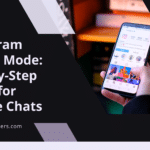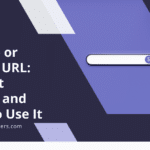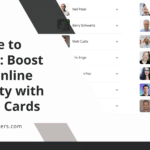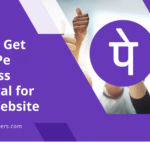
Content optimization is a crucial aspect of search engine optimization (SEO) that involves making your website’s content more visible and relevant to search engines. By optimizing your content, you can improve your website’s ranking in search engine results pages (SERPs), drive more organic traffic to your site, and ultimately increase conversions and revenue.
Key Takeaways
- Content optimization is crucial for improving search engine rankings and driving traffic to your website.
- Conducting thorough keyword research is essential for effective optimization and targeting the right audience.
- Crafting compelling headlines and meta descriptions can increase click-through rates and improve user engagement.
- Creating high-quality content that meets user intent is key to keeping visitors on your site and improving conversion rates.
- Incorporating multimedia elements such as images and videos can enhance user engagement and improve the overall user experience.
Understanding the Importance of Content Optimization
Content optimization is crucial for SEO because search engines rely on algorithms to determine the relevance and quality of web pages. These algorithms take into account various factors, including keywords, user experience, and the overall quality of the content. By optimizing your content, you can ensure that search engines understand what your website is about and rank it higher in relevant search queries.
In addition to improving your website’s visibility in search results, content optimization also benefits user experience. When users find high-quality, relevant content that meets their needs, they are more likely to stay on your site longer, engage with your content, and convert into customers. By optimizing your content to meet user intent and provide valuable information, you can enhance the overall user experience and build trust with your audience.
Conducting Keyword Research for Effective Optimization
Keyword research is a critical step in content optimization as it helps you identify the most relevant keywords and phrases that your target audience is using to search for information online. By incorporating these keywords into your content, you can increase its visibility in search results and attract more organic traffic to your site.
There are several tools and techniques available for conducting keyword research. Google Keyword Planner is a popular tool that provides insights into keyword search volume, competition, and related keywords. Other tools like SEMrush and Moz Keyword Explorer offer additional features such as competitor analysis and keyword difficulty scores.
When conducting keyword research, it’s important to consider both short-tail and long-tail keywords. Short-tail keywords are broad terms that have high search volume but also high competition. Long-tail keywords, on the other hand, are more specific and have lower search volume but also lower competition. By targeting a mix of both types of keywords, you can optimize your content for a wider range of search queries.
Crafting Compelling Headlines and Meta Descriptions
| Metrics | Description |
|---|---|
| Click-Through Rate (CTR) | The percentage of people who click on your headline and visit your website. |
| Keyword Relevance | The extent to which your headline and meta description match the user’s search query. |
| Length | The number of characters in your headline and meta description. It’s important to keep them within the recommended limits to avoid truncation. |
| Emotional Appeal | The ability of your headline to evoke emotions and connect with your audience. |
| Uniqueness | The degree to which your headline stands out from the competition and offers a unique value proposition. |
| Brand Consistency | The alignment of your headline and meta description with your brand messaging and tone of voice. |
Headlines and meta descriptions play a crucial role in attracting users to click on your content in search results. A well-crafted headline should be attention-grabbing, concise, and accurately reflect the content of the page. It should also include relevant keywords to improve its visibility in search results.
Similarly, meta descriptions provide a brief summary of the content and should entice users to click through to your website. They should be informative, compelling, and include relevant keywords. While meta descriptions do not directly impact search engine rankings, they can significantly impact click-through rates (CTR) and ultimately drive more traffic to your site.
When writing headlines and meta descriptions, it’s important to strike a balance between optimization and user experience. While including keywords is important for SEO, it’s equally important to create compelling and engaging copy that resonates with your target audience.
Creating High-Quality Content with User Intent in Mind
Creating high-quality content that meets user intent is essential for both SEO and user experience. User intent refers to the reason behind a user’s search query and can be categorized into informational, navigational, or transactional intent.
To create content that meets user intent, it’s important to understand what your target audience is looking for and provide valuable information that answers their questions or solves their problems. This involves conducting thorough research on the topic, using credible sources, and presenting the information in a clear and organized manner.
In addition to providing valuable information, high-quality content should also be well-written, engaging, and visually appealing. It should be easy to read and understand, with proper formatting, headings, and bullet points. Including relevant images, videos, and infographics can also enhance the overall user experience and make the content more shareable.
Incorporating Multimedia Elements for Enhanced Engagement

Incorporating multimedia elements such as images, videos, and infographics can significantly enhance the engagement and effectiveness of your content. These elements not only make your content more visually appealing but also help to break up text and make it easier to consume.
Images can be used to illustrate concepts, provide examples, or evoke emotions. Videos can be used to demonstrate products or services, provide tutorials, or share testimonials. Infographics can be used to present complex information in a visually appealing and easy-to-understand format.
Including multimedia elements in your content not only improves user experience but also increases the likelihood of social sharing and backlinking. Visual content is more likely to be shared on social media platforms, which can help to increase brand visibility and drive more traffic to your site. Additionally, multimedia elements can also improve the overall SEO of your content by providing additional opportunities for keyword optimization.
Utilizing Internal and External Links for SEO Benefits
Internal and external links play a crucial role in content optimization by improving website navigation, establishing authority, and enhancing the overall user experience.
Internal links are links that point from one page on your website to another page on the same website. They help search engines understand the structure of your website and how different pages are related to each other. Internal links also help users navigate your site more easily, find relevant information, and spend more time on your site.
When including internal links in your content, it’s important to use descriptive anchor text that accurately reflects the content of the linked page. This helps search engines understand the context of the link and improves the overall SEO of your content.
External links, on the other hand, are links that point from your website to another website. They can be used to provide additional resources or references, establish credibility, and improve the overall user experience. When including external links in your content, it’s important to link to reputable and authoritative sources that provide valuable information related to your topic.
Optimizing for Mobile and Voice Search
With the increasing use of mobile devices and voice assistants, optimizing your content for mobile and voice search is essential for reaching a wider audience and improving user experience.
Mobile optimization involves ensuring that your website is responsive and mobile-friendly, with fast loading times and easy navigation. This includes using a responsive design, optimizing images and videos for mobile devices, and using clear and concise headings and bullet points.
Voice search optimization involves understanding how users interact with voice assistants like Siri, Alexa, and Google Assistant and optimizing your content to match their natural language queries. This includes using conversational language, answering frequently asked questions, and providing concise and direct answers.
By optimizing your content for mobile and voice search, you can improve the overall user experience, increase engagement, and drive more organic traffic to your site.
Leveraging Social Media for Content Promotion
Social media plays a crucial role in content promotion by increasing brand visibility, driving traffic to your site, and improving search engine rankings.
When promoting your content on social media, it’s important to choose the right platforms that are most relevant to your target audience. This includes platforms like Facebook, Twitter, LinkedIn, Instagram, and Pinterest. By sharing your content on these platforms, you can reach a wider audience, engage with your followers, and encourage social sharing.
In addition to sharing your own content, it’s also important to engage with your audience by responding to comments, answering questions, and sharing relevant content from other sources. This helps to build trust and credibility with your audience and encourages them to share your content with their own networks.
Measuring and Analyzing Your Optimization Efforts
Measuring and analyzing your optimization efforts is essential for understanding the effectiveness of your content and making data-driven decisions to improve your SEO strategy.
There are several tools and techniques available for measuring content optimization efforts. Google Analytics is a popular tool that provides insights into website traffic, user behavior, and conversion rates. Other tools like Google Search Console and Moz Pro offer additional features such as keyword rankings, backlink analysis, and site audits.
When analyzing your data, it’s important to look at key metrics such as organic traffic, bounce rate, time on page, and conversion rates. By tracking these metrics over time, you can identify trends, identify areas for improvement, and make data-driven decisions to optimize your content.
Staying Up-to-Date with Algorithm Changes and Best Practices
Search engine algorithms are constantly evolving, and it’s important to stay up-to-date with the latest algorithm changes and best practices to ensure that your content remains optimized.
Algorithm changes can have a significant impact on your website’s visibility in search results. For example, Google’s algorithm updates like Panda, Penguin, and Hummingbird have all had major impacts on search rankings. By staying informed about these changes and adjusting your SEO strategy accordingly, you can maintain or improve your website’s ranking in search results.
In addition to algorithm changes, it’s also important to stay up-to-date with best practices in content optimization. This includes staying informed about the latest trends in keyword research, on-page optimization, link building, and user experience. By staying ahead of the curve and implementing best practices in your content optimization efforts, you can ensure that your website remains competitive in search results.
Content optimization is a crucial aspect of SEO that involves making your website’s content more visible and relevant to search engines. By optimizing your content, you can improve your website’s ranking in search results, drive more organic traffic to your site, and ultimately increase conversions and revenue.
To effectively optimize your content, it’s important to conduct keyword research, craft compelling headlines and meta descriptions, create high-quality content with user intent in mind, incorporate multimedia elements, utilize internal and external links, optimize for mobile and voice search, leverage social media for content promotion, measure and analyze your optimization efforts, and stay up-to-date with algorithm changes and best practices.
By implementing these strategies and continuously optimizing your content, you can improve your website’s visibility in search results, enhance the user experience, and achieve your SEO goals.
If you’re looking to optimize your content for better search engine rankings, you might find this article on “Maximizing Your Online Presence: How an SEO Optimization Company in India Can Help” helpful. It provides insights into the role of an SEO company in improving your website’s visibility and driving organic traffic. Check it out here.
FAQs
What is content optimization?
Content optimization is the process of improving the quality and relevance of website content to increase its visibility and ranking on search engines.
Why is content optimization important?
Content optimization is important because it helps to improve the visibility and ranking of a website on search engines, which in turn increases traffic and leads to higher conversion rates.
What are the key elements of content optimization?
The key elements of content optimization include keyword research, on-page optimization, content creation, and link building.
What is keyword research?
Keyword research is the process of identifying the most relevant and popular keywords and phrases that people use to search for information related to a particular topic or industry.
What is on-page optimization?
On-page optimization refers to the process of optimizing individual web pages to improve their ranking and visibility on search engines. This includes optimizing page titles, meta descriptions, headers, and content.
What is content creation?
Content creation is the process of developing high-quality, relevant, and engaging content that is optimized for search engines and designed to attract and retain visitors to a website.
What is link building?
Link building is the process of acquiring high-quality backlinks from other websites to improve the authority and ranking of a website on search engines.

























































